Visiting Vatican in just one day may be overwhelming. The list of must-sees is long, and walking inside the labyrinth of the Vatican Museums takes time. If you are planning to stop in front of each artwork for just one second, prepare to spend five years in the Museums alone.
The mandatory highlights are the Vatican Museums, Sistine Chapel, and St. Peter’s Basilica – for touring these alone you will need at least three hours among pushing and shoving. Pick your route carefully, and take also enough time to wander off the beaten track. Play with the idea that the very same, gold wrapped ceilings that you’re admiring have witnessed papal conspiracies, ferocious ambition of rivaling artists, and loads of dark secrets that have been buried out of the way of the official history. Maybe you’ll even feel the presence of Michelangelo, the Borgia Pope or some other anxious soul who is still searching for his atonement.
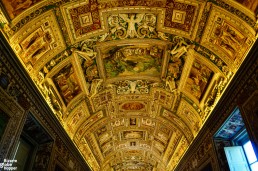
Visiting Vatican on a Guided Tour or independently?
If you don’t want to waste your precious holiday in queues, the answer is clear: take a guided tour – even if you happen to hate tours. Privileged access saves so much time that it makes even a headset tour bearable. Afterwards you can explore the Vatican Museums, Sistine Chapel, St. Peter’s Basilica, and other accessible areas on your own.
It’s much easier if someone knowing the hoods escorts you through the herds to the masterpieces you were longing to see, even if you didn’t know it beforehand. If you haven’t studied Italian art history like five years or don’t have an Italian friend who has, I really suggest a guided tour. All the official guides are art historians with a university degree. Think a guided tour as a mandatory introduction, after which you are better equipped for independent adventures: you’ve already checked most of the must-sees and are more familiar with the confusing, labyrinth-like layout of the Vatican Museums.
The good news is that there are actually great tour options available, so just take time to compare tour operators to discover the best for you. We went with When in Rome and were happy with our choice. Our small group tour aptly named “Vatican, Vatacombs, St Peter’s” covered the biggest hits with a small detour under the St Peter’s Basilica.
Our guide Chiara was without a doubt the best we encountered in the museums. She was extremely knowledgeable and her passion for art was contagious. As an added bonus she made our 4-hour hike among the herds intolerably funny keeping us alert to surprising finds all the time. She knew her place, and ordered other guides aside when we entered for example the Raphael Rooms, hence we were able to enjoy the artworks while she was pouring stories like a crazy Italian art fanatic – in a really good and entertaining way. The tour was supposed to last 3 hours, but our beloved guide got so carried away that we got an additional hour, which made everyone smile.
Touring the Vatican Museums’ Biggest Hits With Some Curiosities
The Vatican Museums embody a bitter contest between the biggest Renaissance names: Michelangelo, Raphael, and Leonardo. But let’s wander through the classics at first, since they were the source of inspiration for the later heroes.
The Belvedere Courtyard connecting Vatican Palace with Villa Belvedere is an architectural gem in its Renaissance grandeur. However, the main draw is its reputable collection of ancient Greek and Rome treasures. This is where you’ll find for example Laocoön, perhaps the most famous Greek statue in the known art history. This same marble sculpture marks the birth of the Vatican Museums, as it was the first piece Vatican bought. One lucky farmer found the statue from vineyards near Rome in the 1500s, although its missing arm wasn’t found until the beginning of 20th century.
Michelangelo admitted that Laocoön influenced his work tremendously, and of course he wasn’t the only one. Look at how precisely the motion is manifested in the muscles, how fiercely visible the veins are. Pictures cannot tell the whole story, so you just have to see it yourself. Another showstoppers are the bronze statue of Hercules and the statues of Apollo including Belvedere Torso. According your preferences visit also the Gallery of Busts or the Gallery of Animals.
Fast-forward thousand years or so, and let a few intriguing galleries lead your way towards the Vatican Palace. The wonderful Gallery of Maps proves that maps we 90 % accurate already in the 1500s. In the Gallery of the Tapestries you’ll encounter Jesus whose eyes will eerily follow your steps – one of the many optical illusions inside the Vatican.
Unexpectedly I ended up enjoying more the Rooms of Raphael than the Sistine Chapel. I blame the School of Athens, which illustrated the cover of our history book at senior high. During the lessons I used to stare at it dreaming about reviving the center figures, Plato and Aristotle. Raffaello was painting the Pope’s private rooms while Michelangelo was working with the ceiling of Sistine Chapel. Legend has it that Raffaello sneaked in the chapel to stalk the paintings, and took so strong influence, that Michelangelo accused him of plagiarism. Michelangelo despised Leonardo da Vinci, but his antipathy towards Raphael was even more evident.
Feeling exhausted already? Don’t give up yet, as the Borgia Apartments will entertain your eyes with some extravagant, though mainly religious frescos. Some call the style as “3D Renaissance”, because there are metals and fake jewels in the frescos. From here you’ll find also the first European depiction of the Native Americans, revealed just a few years ago. The notorious Borgia Pope died in one of the chambers, possibly poisoned, and the husband of Lucrezia Borgia was murdered in another. If just the walls could speak, you could get a prime lesson in plotting, treachery, and debauchery.
Finally, after several ancient sculptures, blinding amounts of gold, some early Christian sargophagi, and an endless flow of namedropping from Leonardo da Vinci, Bellini, Caravaggio, and Titian to Dalí, you’ll approach the biggest Michelangelo bomb: the Sistine Chapel.
See the Sistine Chapel in a New Light
I was surprised by how small and packed the chapel was, which flattened otherwise sublime experience a bit. Only here did our guide met her limits, since guards don’t allow speaking at all. She still tried her best by whispering into our headsets and disciplining other guides while smiling irresistible to the guards. No photos are allowed either, so excuse my detailed account, and go see it yourself!
We were the first ones to see the commanding, 14 000 square foot ceiling in literally new light, as a brand new lightning system with 7000 LEDs was installed just a day before. Even our guide was stunned telling us that colors are much brighter than before. Still I have to admit that after all the hype about Michelangelo’s 3D effect I was expecting something even more spectacular. However, this is the place to bring back all the esoteric interpretations, from kabbalah to Dan Brown, if you wish.
The Creation of Adam is replicated in souvenir and kitsch items to the level of banalising the image of finger-to-finger touch, and thus seems to be the most respected theme of our ages. But in the time of creation people valued the other scenes. While Michelangelo just copied the figure of Adam from other frescoes, for example the figures of crucified Haman and prophet Jonah showed unique technique in their sculptural poses and muscularity getting props from his contemporaries.
Michelangelo spend four years doing his magic with the ceiling, starting at the tender age of 23. He returned 30 years later to paint the Last Judgement, alone. At this time the genius didn’t want to share his honour with others. The same pride leaded him to burn all the sketches before his death.
It’s hard to pick your favorite from the vivid figures, but I’m obviously more drawn to the hell section. Michelangelo had also a twisted sense of humor, since he immortalized the Pope’s Master of Ceremonies, Biagio da Cesena, as a donkey eared god of the underworld. The same fellow had scolded the Sistine Chapel as a brothel after Michelangelo’s nude figures took the show. Michelangelo would have been furious to hear that after his death all the naked bodies received cloths. When the frescos were restored during the 1990s it was discovered that Michelangelo had placed a snake to eat Cesena’s tiny genitals – eternally. That’s what I call a sublime revenge.
With When in Rome Tours we were given a direct access from the Sistine Chapel to the St Peter’s Basilica unlike some of the other tours or independent visitors, so we could spend more time marveling the wonders of Vatican instead of exiting the whole city and then circling back through long lines towards St Peter’s. A nice add, when you have limited time.
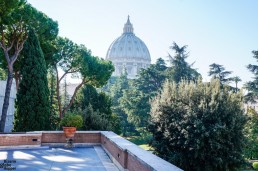
Highlights of St Peter’s Basilica
Show-offish St Peter’s Basilica boasts to be the biggest Christian basilica in the world. As a proof the measurements of other huge churches are printed on the marble of its nave. It teems with precious metals and stones, angels and statues. To fully understand its grandeur you will, once again, need a guide. Namedropping won’t stop here either, so prepare to take in the reminder of who’s who in Renaissance art.
Pièta, located in St Peter’s Basilica, is the only statue Michelangelo ever signed. Legend has it that Michelangelo heard people crediting another sculptor, which lead him to secretly sneak in and sign a band on Virgin Mary’s chest. In 1972 one mentally unstable geologist attacked Pièta with a hammer cutting its hand and nose. Eyewitnesses stole some of the marble pieces, and the nose hasn’t still been found. Nowadays the statue is protected with a bulletproof glass and ropes.
Bernini’s baldacchino stands pompously upon the supposed grave of Peter the Apostle. At the same time it marks the altar that only Pope is allowed to use. In an extremely Roman way, the bronze was ripped from the Pantheon, which aroused a lot of discussion back in the days. Baldacchino was Bernini’s first piece in St Peter’s, to be followed by the Chair of St Peter, the enshrined chair supposedly used by the apostle. Weirdly enough, there are straight allegories to woman’s pregnancy in the most sacred place of Catholic Church. Stories linger that it’s Bernini’s silent revenge against the Pope, who disavowed his nephew’s illegally born child.
Bramante designed the original layout of the St Peter’s Basilica in the form of a Greek cross, which Raphael later changed. In the end, it was still Michelangelo who finalized the plans 40 years later, after all the previous artists had died. Already 70-year old Michelangelo took over unwillingly, so you might hear the dissatisfied groans of his ghost echoing from the walls. He added a massive dome expanding Vatican’s records: with over 130 meter’s height the dome is still tallest in the world.
Enter the Vatacombs, Vatican’s Catacombs
Catacombs of Vatican sound a real blast, and as we visited the walled city in Halloween, we were twice excited. In the end, the Vatacombs turned out to be our biggest – and maybe even the only – disappointment during the day. In reality the Vatacombs are just a big hall: you are visiting the old Constantian basilica beneath the Renaissance basilica, not catacombs of any sort. There is a “tomb” of Peter the Apostle, or a structure “memorializing his original grave”, like Vatican puts it. Many of the popes are also buried down there.
The place is actually called Vatican grottoes, so we found the term catacomb extremely misleading. There is an ancient Christian necropolis beneath the grottoes, but it used to be an open-air graveyard with tombs, not a catacomb either. The real treat would still be a visit to Scavi, the excavations of that Christian necropolis. Downside is that the Excavations Office limits the number of visitors to 250 per day, so you have to book months in advance. You can try to make a reservation here. We wish you luck!
If you have been in Vatican, how was your experience? Did you make any disturbing finds? Share with us your thoughts!
*Disclaimer: Our visit in Vatican was hosted by When In Rome Tours. Like always, our thoughts and opinions remain entirely our own.
Pin this story!
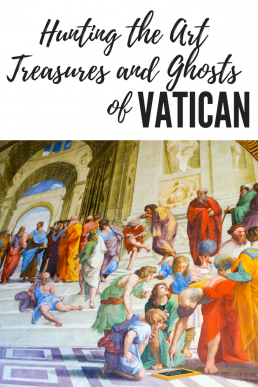
You May Also Like to Read:
Unveiling the Bizarre Facets of Vatican
ATMs speaking Latin, mysterious secret archives, and the highest crime rate in the world – welcome to Vatican!
Best Christmas Markets in Copenhagen and Christmas Things to Do
Wander through Copenhagen’s Christmas markets, marvel Tivoli in its Christmas gown and sip Danish winter brews to catch the spirit of Yule.
Visiting A Cigar Factory In Estelí, Nicaragua
Visiting a cigar factory in Nicaragua is an interesting experience. You'll see the cigar making process from start to finish in the cigar factory tour.
Valencia’s Old Town Merges Famous Sights With Street Art
Narrow alleys of El Carmen host a weird mix: subcultures and street art, orange gardens, old mansions, and the most iconic sights of the city.


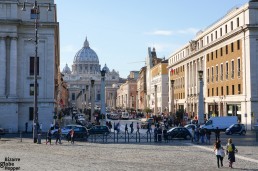
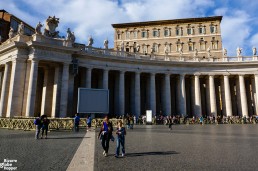
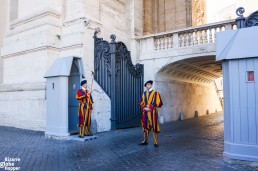
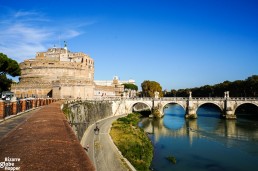
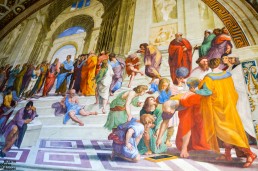
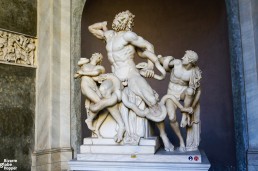
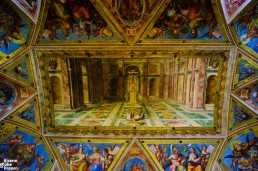
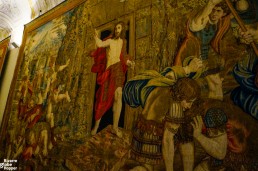
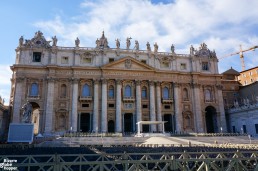
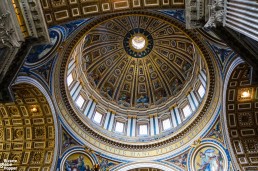
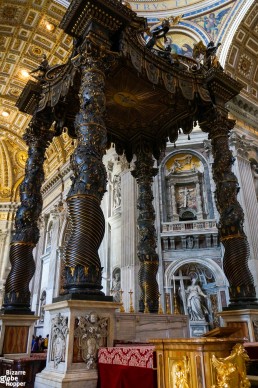
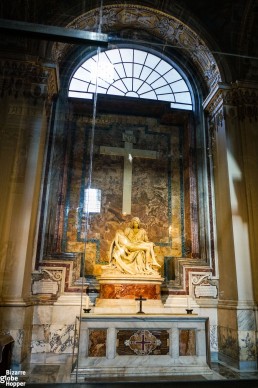
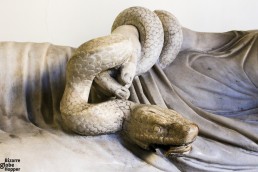
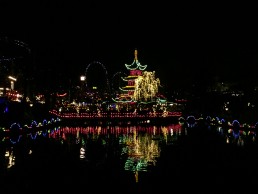
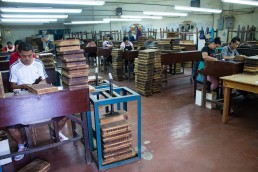
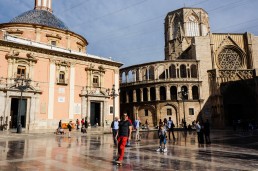
I visited the Scavi a summer ago – and have to say it was a very easy process. My first choice of date was accepted and the couple of hours spent in the Necropolis proper & the Pagan catacombs was enlightening and exceptionally beautiful. The guide was more than accommodating – with plenty of info and an obvious passion for the history.
You do have to go through a security check with the Swiss Guard – but I relished the opportunity!
Hi Nick and Katie, thanks for stopping by! I’m pleased to hear that the process with Scavi went smoothly. I’ve heard quite the opposite, even some locals said that they’ve been in the waiting list for months. I guess you might have been exceptionally lucky as well! Are there actual catacombs as well?
Great information, thank-you! The Vatican is such a gold mine for art and history. It’s incredible to have so much is what is essentially only a little island of historic buildings. Thank-you for sharing!